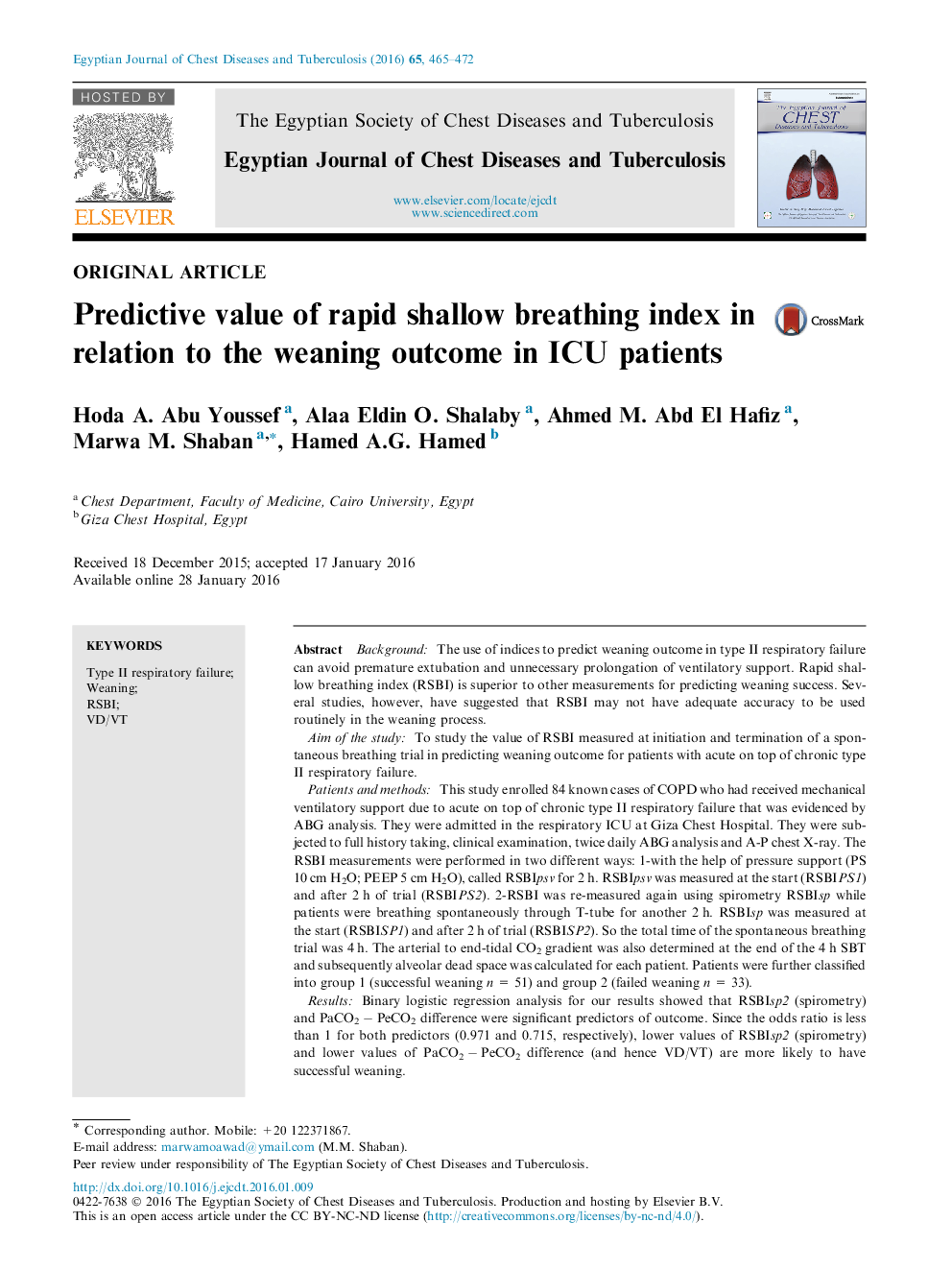| Article ID | Journal | Published Year | Pages | File Type |
|---|---|---|---|---|
| 3399858 | Egyptian Journal of Chest Diseases and Tuberculosis | 2016 | 8 Pages |
BackgroundThe use of indices to predict weaning outcome in type II respiratory failure can avoid premature extubation and unnecessary prolongation of ventilatory support. Rapid shallow breathing index (RSBI) is superior to other measurements for predicting weaning success. Several studies, however, have suggested that RSBI may not have adequate accuracy to be used routinely in the weaning process.Aim of the studyTo study the value of RSBI measured at initiation and termination of a spontaneous breathing trial in predicting weaning outcome for patients with acute on top of chronic type II respiratory failure.Patients and methodsThis study enrolled 84 known cases of COPD who had received mechanical ventilatory support due to acute on top of chronic type II respiratory failure that was evidenced by ABG analysis. They were admitted in the respiratory ICU at Giza Chest Hospital. They were subjected to full history taking, clinical examination, twice daily ABG analysis and A-P chest X-ray. The RSBI measurements were performed in two different ways: 1-with the help of pressure support (PS 10 cm H2O; PEEP 5 cm H2O), called RSBIpsv for 2 h. RSBIpsv was measured at the start (RSBIPS1) and after 2 h of trial (RSBIPS2). 2-RSBI was re-measured again using spirometry RSBIsp while patients were breathing spontaneously through T-tube for another 2 h. RSBIsp was measured at the start (RSBISP1) and after 2 h of trial (RSBISP2). So the total time of the spontaneous breathing trial was 4 h. The arterial to end-tidal CO2 gradient was also determined at the end of the 4 h SBT and subsequently alveolar dead space was calculated for each patient. Patients were further classified into group 1 (successful weaning n = 51) and group 2 (failed weaning n = 33).ResultsBinary logistic regression analysis for our results showed that RSBIsp2 (spirometry) and PaCO2 − PeCO2 difference were significant predictors of outcome. Since the odds ratio is less than 1 for both predictors (0.971 and 0.715, respectively), lower values of RSBIsp2 (spirometry) and lower values of PaCO2 − PeCO2 difference (and hence VD/VT) are more likely to have successful weaning.ConclusionRSBIsp measured through spirometry at the end of SBT is a better predictor of weaning outcome than RSBIpsv measured through pressure support. Our result also reveal that dead space fraction (Vd/Vt) together with PACO2–PECO2 difference are good adjunctive tools for predicting weaning outcome in type II respiratory failure.
